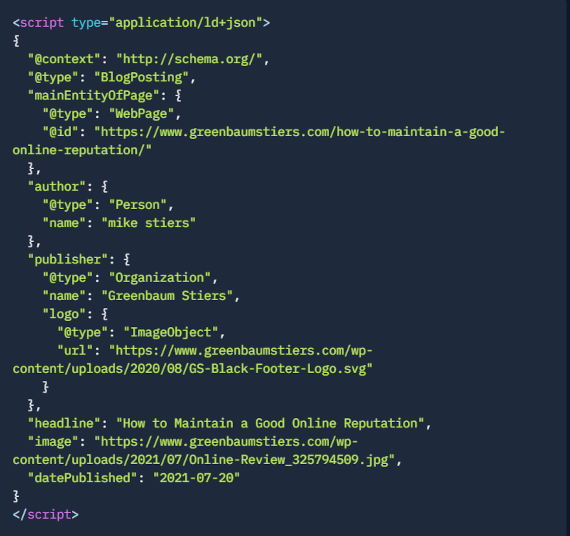You already know the answer, and so do we; most searchers will click on the links towards the top because it’s the first answer they see, and those answers are there because that is what the search engine has determined is the correct answer for the question asked. So how do you get your content to the top? Using the right tools, content, and strategy, an essential part of that strategy is schema markup – essentially a way to flag your content as relevant to the searcher’s intent.
Ask yourself: when you Google a question,
do you click on the first answer that pops up or do you scroll to the bottom?
You already know the answer, and so do we; most searchers will click on the links towards the top because it’s the first answer they see, and those answers are there because that is what the search engine has determined is the correct answer for the question asked.
So how do you get your content to the top? Using the right tools, content, and strategy, an essential part of that strategy is schema markup – essentially a way to flag your content as relevant to the searcher’s intent.
Here is a beginner’s guide on how to use schema markup to control how your website or webpages appear on Google’s Search Engine Results Page (SERP) and get your content more visible on the internet.
What is
SERP appearance?

We already established that SERP stands for Search Engine Results Page. SERP Appearance, naturally, refers to how content appears on that page.
While you may think that the only way a link or article appears on the SERP is just a text-based link, that hasn’t been the case for years. When you look for a restaurant, you see local businesses pop up on the right-hand side. Sometimes, highlighted articles get placed in special windows at the top.
Those websites and links must just magically get chosen to be there, right?
Wrong.
Google doesn’t choose websites and articles willy-nilly to get featured via special SERP appearances. Instead, it goes through several paces to determine what articles are most relevant to each search and organizes them appropriately.
Through a combination of search engine optimization (SEO), high-quality content, and schema markup, you can give your website the best chance it has at getting a different SERP appearance.
We have other Growth Tips on SEO and high-quality website content, so it’s schema markup we want to focus on for this piece.
What is
schema markup?
Google and other search engines know how to sift through text pretty well, but they’re not great at categorizing that text. That’s where schema markup comes in.
Schema markup refers to marking the data on your website so that search engines can better organize it. For example, we’ll go back to the recipes that appear at the top of the SERP. Included is an image, the recipe title, prep time, and sometimes a few more elements. Because of schema markup, Google knows all those factors. If those recipes had just text with no markup or optimization, then the SERP appearance would be left to the mercy of the search engine.

How to Use
schema markup

What’s important to understand is that schema markup is one of the best ways to control your SERP appearance. Controlling it isn’t as easy as just plopping the right text in, though. There are several considerations to make.
Google crawls through websites via JSON-LD. Don’t worry too much about what that means. Just understand that it will dictate the format of your schema markup. Below is an example of schema markup for one of our articles titled “How to Maintain a Good Online Reputation”.
As you’ll see this format categorizes the content from the article, such as title, author, logo, and more. By pasting this into the “header” section of your webpage, you can format your website with schema markup.
Typing all of this manually would be a pain, though, so here is a schema markup generator where you can put your information and receive the code you need.
What’s
the point?
All of this is hard work, so what’s the point of it all?
With proper optimization and use of schema markup, you’ll receive a better click-through rate, higher results on SERPs, and more longevity for your content.
Start the conversation
with Greenbaum Stiers
Whether you’re a burgeoning startup or an established enterprise aiming to expand, Greenbaum Stiers is here to assist. Contact us today to schedule a no-obligation consultation and discover how our dedicated team can help your business flourish in a constantly evolving world.
